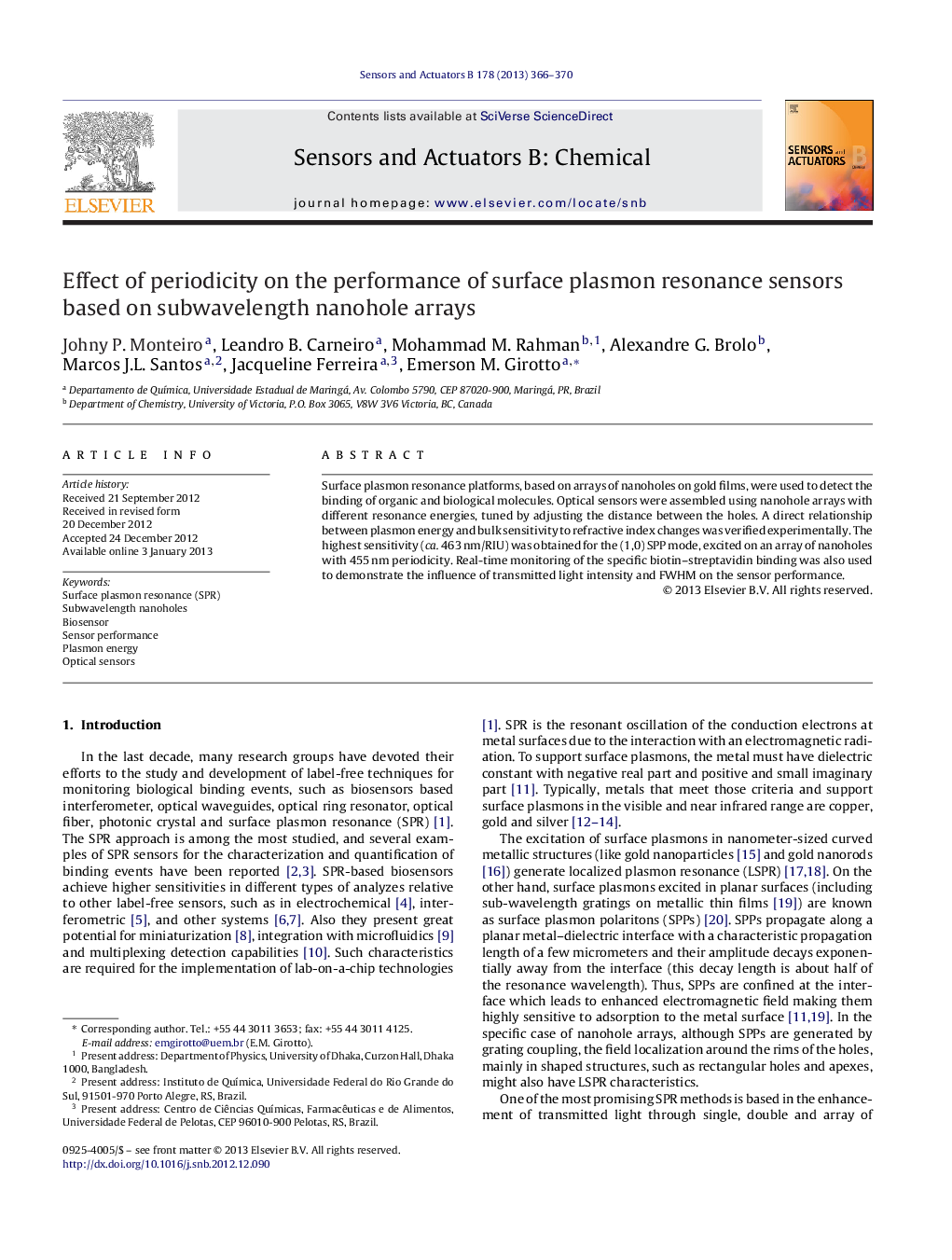| Article ID | Journal | Published Year | Pages | File Type |
|---|---|---|---|---|
| 745247 | Sensors and Actuators B: Chemical | 2013 | 5 Pages |
Abstract
Surface plasmon resonance platforms, based on arrays of nanoholes on gold films, were used to detect the binding of organic and biological molecules. Optical sensors were assembled using nanohole arrays with different resonance energies, tuned by adjusting the distance between the holes. A direct relationship between plasmon energy and bulk sensitivity to refractive index changes was verified experimentally. The highest sensitivity (ca. 463 nm/RIU) was obtained for the (1,0) SPP mode, excited on an array of nanoholes with 455 nm periodicity. Real-time monitoring of the specific biotin–streptavidin binding was also used to demonstrate the influence of transmitted light intensity and FWHM on the sensor performance.
Related Topics
Physical Sciences and Engineering
Chemistry
Analytical Chemistry
Authors
Johny P. Monteiro, Leandro B. Carneiro, Mohammad M. Rahman, Alexandre G. Brolo, Marcos J.L. Santos, Jacqueline Ferreira, Emerson M. Girotto,
